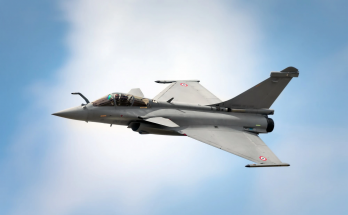by Dan Darling, International Military Markets Analyst, Forecast International.
The Indian government is exploring its options as it seeks to move forward on the Indian Navy’s Project 75I program involving a new six-ship class of nuclear-powered attack submarines (SSNs).
These new SSNs would supplement the Indian Navy’s existing inventory of 16 submarines, which currently include one nuclear-powered submarine armed with nuclear-tipped missiles (SSBN) based on the Russian Project 670M Skat (Charlie II) class, the INS Arihant. The Arihant is the first SSBN for the Indian Navy and is currently undergoing sea trials in Vizag. It represents the lead ship in the five-unit Arihant-class SSBN fleet being constructed through 2027.
The Indian Navy also has one other nuclear-powered submarine, a Russian-leased Project 971 Akula-class SSN rechristened the INS Chakra upon her commissioning into Indian naval service on April 4, 2012. This submarine is being leased under a 10-year deal that expires in 2022 and is being used to train Indian Navy crew members for operating SSNs.
India’s larger plan for Project 75I is to harvest technologies from abroad in order to design and produce an SSN domestically utilizing the private sector.
The program was originally accepted in principle by the previous center-left United Progressive Alliance (UPA) coalition government in 2011, but a formal tender was then withheld due to the issue of private shipyard involvement. Private domestic shipyards demanded an opportunity to compete for the project; the original proposal, cleared by the Defense Acquisition Council in 2011, had specified that only state-owned Mazagon Dock and Hindustan Shipyard would be assigned to build four of the boats (the first two submarines would be acquired from foreign companies that would establish a new manufacturing line for joint submarine production with either state-owned shipyard).
While the UPA government favored a corporate welfare approach to domestic defense acquisition, the center-right National Democratic Alliance (NDA) government of Prime Minister Narendra Modi – recognizing the need for greater competition within the Indian defense industry – has sought to move past entrenched state sector interests and foster private sector involvement. After the project was cleared by India’s Cabinet Committee on Security in February, the Indian Navy’s own committee recommended one month later that the tender be sent to private yards Pipavav Defense and Offshore Engineering and Larsen & Toubro.
While this approach makes sense in terms of broadening localized capabilities and providing for internal competition, it also risks becoming time-consuming and inflating costs. India’s original Project 75 – involving the local construction by Mazagon Dock of six new-build Scorpene submarines under license from France’s DCNS – is now four years behind schedule and has fallen victim to defense inflation stemming from cost growth in crucial parts.
Indian defense circles are also considering whether or not to lease an additional Akula-class submarine under the “Chakra 3” project.
But for now, the Modi government seems intent on driving forward with its “Make in India” industrial policy. Therefore, Project 75I remains a crucial centerpiece of indigenization efforts.
First, however, a foreign partner needs to be found.
Russian shipyards have already expressed interest, as have French representatives. Indian officials have reportedly shown interest in the new Barracuda-class SSNs being developed for the French Navy by local shipbuilding giant DCNS. In addition, local media report that the submarine branch of a leading U.S. conglomerate has met key Indian defense officials regarding the project. General Dynamics Electric Boat and Huntington Ingalls Industries’ Newport News are the two sole players in the U.S. capable of building nuclear-powered submarines.
All three countries are major defense suppliers to India, with Russia the largest source of Indian arms imports. Past reports indicate that Germany’s HDW and Spain’s Navantia have also expressed willingness to tie up with a private Indian shipbuilding firm to compete for the estimated $12 billion contract.
Clearly, finding interest from international vendors will not be a problem. Performance on the local side, however, may prove to be another matter.
With the project being pursued under the Buy and Make (India) policy – meaning any foreign vendor involved in the deal must provide technology transfer to a domestic Indian shipyard – the Modi government’s preference that local work be conducted exclusively by the private sector once again follows an unfortunate Indian pattern of eliminating potential players before a competition has been initiated. Previously it was private sector companies that were shunned when the project was formulated; now it is public shipyards being excluded.
For 50 years, Forecast International intelligence reports have been the aerospace and defense industry standard for accurate research, analysis, and projections. Our experienced analysts compile, evaluate, and present accurate data for decision makers. FI's market research reports offer concise analysis of individual programs and identify market opportunities. Each report includes a program overview, detailed statistics, recent developments and a competitive analysis, culminating in production forecasts spanning 10 or 15 years. Let our market intelligence reports be a key part of reducing uncertainties and mastering your specific market and its growth potential. Find out more at www.forecastinternational.com



